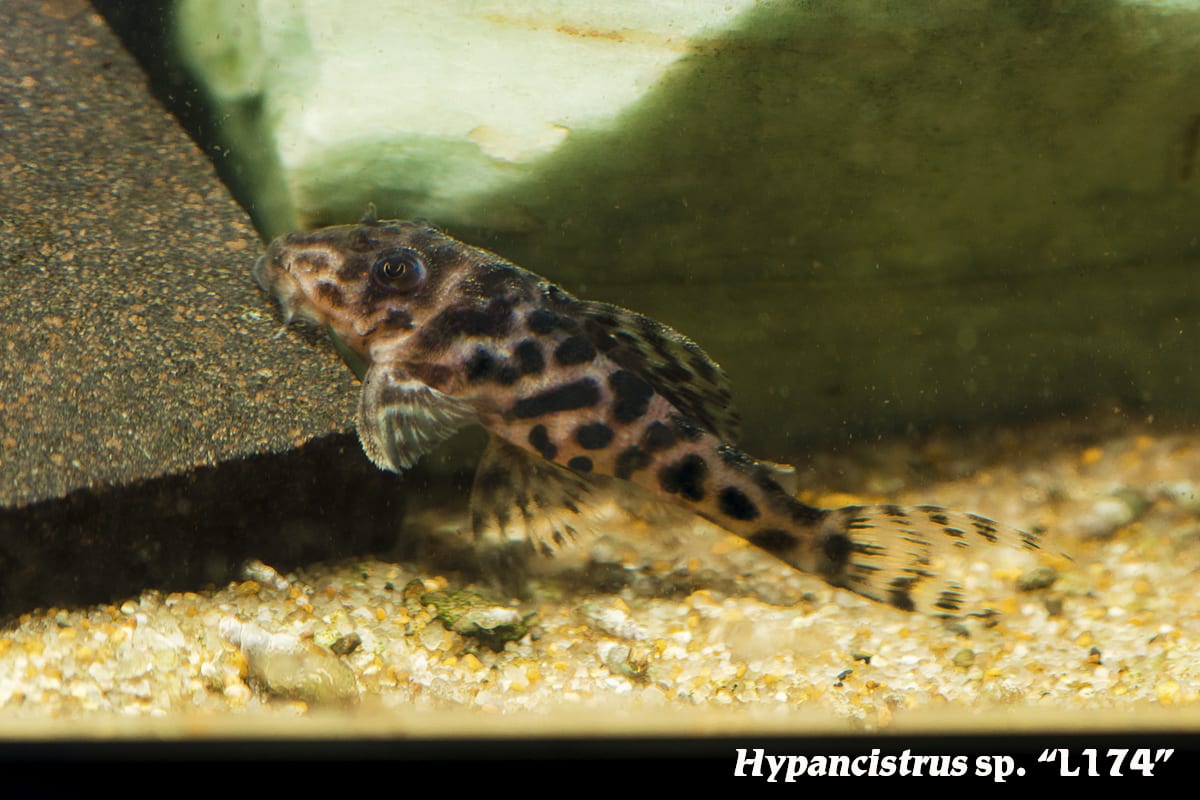Raising Amazona
Raising Amazona
A common story since the dawn of the modern age: natural resources are utilized, human demand increases, and ecosystems around the world are depleted. Following this trend, expansion of agriculture, construction of hydroelectric dams, mining, and so many more essential human activities threaten the aquatic habitats and species diversity found in the Amazon River and it tributaries. As aquarists and freshwater fish lovers, it is important to The Wet Spot to make sure the species we have come to love and appreciate persist. Of particular interest, are the ever-charismatic plecos that dwell along our tank bottoms, whose funny mouths and faces bring us endless joy as they suction to the glass for all to see. Species and variants from the genera Hypancistrus and Ancistrus alike are still undescribed in their native habitats, and many will remain unknown as they diminish and become extinct. Nevertheless, we persist, and tank raise many of these threatened species including Hypancistrus sp. “L260”, Hypancistrus sp. “L174”,and Ancistrus sp. “L180”.
Scientific NameHypancistrus sp. “L260”
Common NameQueen Arabesque Pleco
Temperature / pH78 to 86°F / 5.5 to 7.0 pH
Native LocationRio Tapajos
Preferred DietSmall invertebrates
Found along the rocky bottom of the Rio Tapajos, a major tributary of the lower Amazon, H. sp “L260” is at the mercy of a large-scale hydroelectric project in the works. Known more commonly as “Queen Arabesque Plecos”, they are undeniably creatures of beauty. Reaching 3.5 inches in length, these plecos are dark with an intricate white “scribble” pattern covering their entire flattened bodies, heads, and extended fins. Relatively easy to maintain, they require tank setups mimicking flowing streams with sand or fine gravel substrate, variable-sized water-worn rocks, driftwood branches, plants, and various furnishings forming caves. Regularly bred in aquaria, they are cave spawners exhibiting paternal care. For breeding setups, place enough distinct cave territories for each male in the group. Generally peaceful, “Queen Arabesque Plecos” do great in community tanks alongside other quiet species that are not territorial or aggressive. They should not be kept with other Hypancistrus species or hybridization will occur readily. Feeding chiefly on invertebrates and small animals in the wild, these plecos are omnivorous and should be fed some quantity of vegetal matter alongside regular live and frozen offerings. Gelatin-bound foods are an ideal food delivery mechanism to provide the varied diets necessary to encourage breeding. Tank waters are best maintained with temperatures between 78 and 86°F, pH of 5.5 to 7.0, and hardness of 18 to 268 ppm.
Scientific NameHypancistrus sp. “L174”
Common NameLeopard Frog Pleco
Temperature / pH77 to 82°F / 6.8 to 7.8 pH
Native LocationRio Xingu
Preferred DietSmall invertebrates
Native to the Xingu River, making up 5% of the lower Amazon, H. sp. “L174” is nearly damned from damming. Commonly known as “Leopard Frog Plecos”, these bottom-dwellers reach a dainty 3.5 inches in length with wide and flattened bodies, and small eyes above downward-turned sucker mouths. Truly resembling the terrestrial species they were named for, they exhibit golden bodies with striking leopard spots. Xingu river biotope consists of sand or fine gravel substrate, water-worn rocks, driftwood, multiple caves, and driftwood branches. Low lighting is also appreciated, and can be filtered through numerous plants, floating or otherwise. This pleco is mostly carnivorous by nature, and the plants should remain un-nibbled for the duration. Another cave-spawner, this species breeds readily, and females lay up to 20-30 eggs at a time. Healthy diets go a long way in encouraging spawning, and they should be fed high-quality tablets and pellets with frequent live and frozen meals. Generally shy and diminutive, they do well in community tanks alongside small tetras or similar open water dwellers. Sometimes territorial with conspecifics and similar species, defined cave territories should be laid out in tanks absent of other similar plecos. Tank waters should be maintained with temperatures between 77 and 82°F, pH between 6.8 and 7.8, and high levels of dissolved oxygen.
Scientific NameAncistrus sp. “L180”
Common NameRio Toncantins Bushynose
Temperature / pH78 to 82°F / 6.5 to 7.5 pH
Native LocationRio Toncantins
Preferred DietAlgae
Named for the Amazon tributary it calls home, A. sp. “L180”is more commonly known as the “Rio Tocantins Bushynose Pleco”. Known as the “fluvial artery” of Brazil, this vastly stretching river is important for supporting human life, which unfortunately is bad news for these Bushynose Plecos. Exhibiting the characteristic soft snout-tentacles of their genus, these plecos reach nearly 5 inches in length, and have dark bodies dotted with light-colored pin pricks. Adapted to flowing waters, these plecos should be kept in river biotope setups with fine substrate, river rocks, driftwood, and caves formed from furnishings of the aquarists choice. Ancistrus are cave spawners, and males are responsible for defending eggs and caring for fry. These plecos have the characteristic Ancistrus “hooked tooth”, which they use to scrape algae. Mostly vegetarian, they should be fed items like algae wafers, sinking spirulina foods, and prepared vegetal foods like spinach, zucchini, and cucumber. They should also be offered the occasional meaty live or frozen food. Great for community tanks, they do well with species that aren’t overly large or aggressive. Males may squabble over territories if there aren’t enough caves with adequate spacing between. Tank waters should be soft, and are best maintained with temperatures of 78 to 82°F and pH around neutral.
Help us in our effort to preserve these amazing plecos, and set up those breeding tanks! We’re grateful to our wonderful, experienced, and dedicated client base that help us grow our efforts. Thank you for becoming part of the solution!


